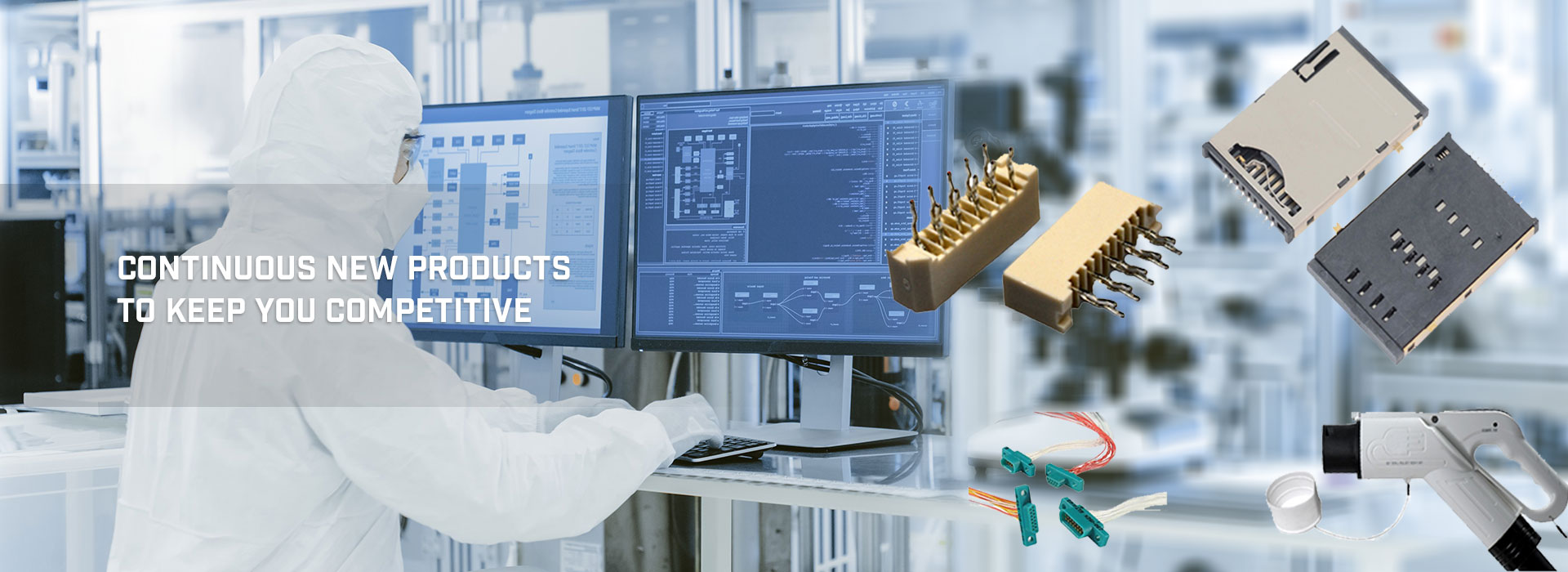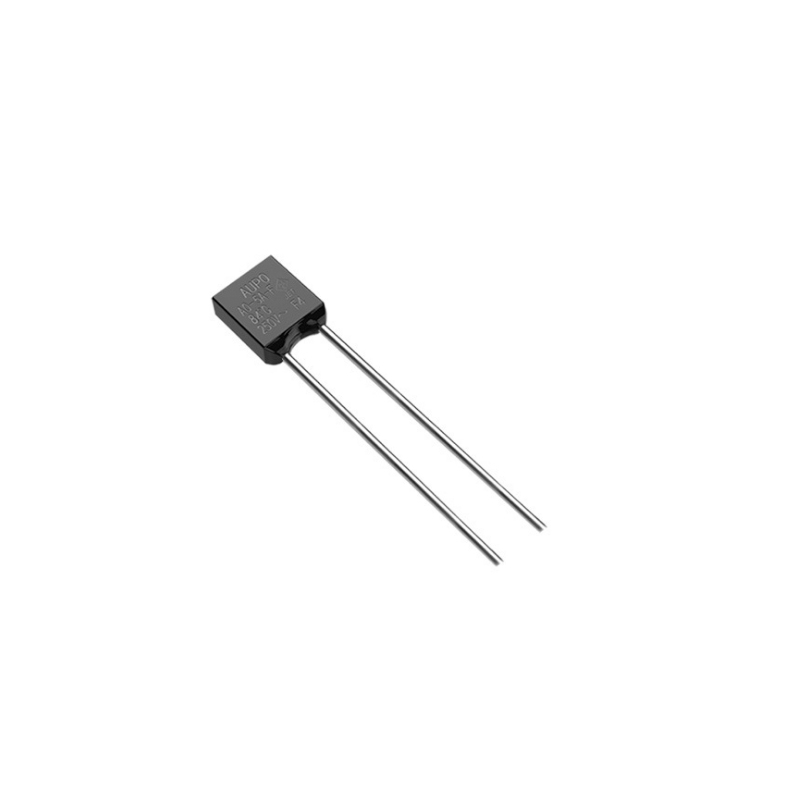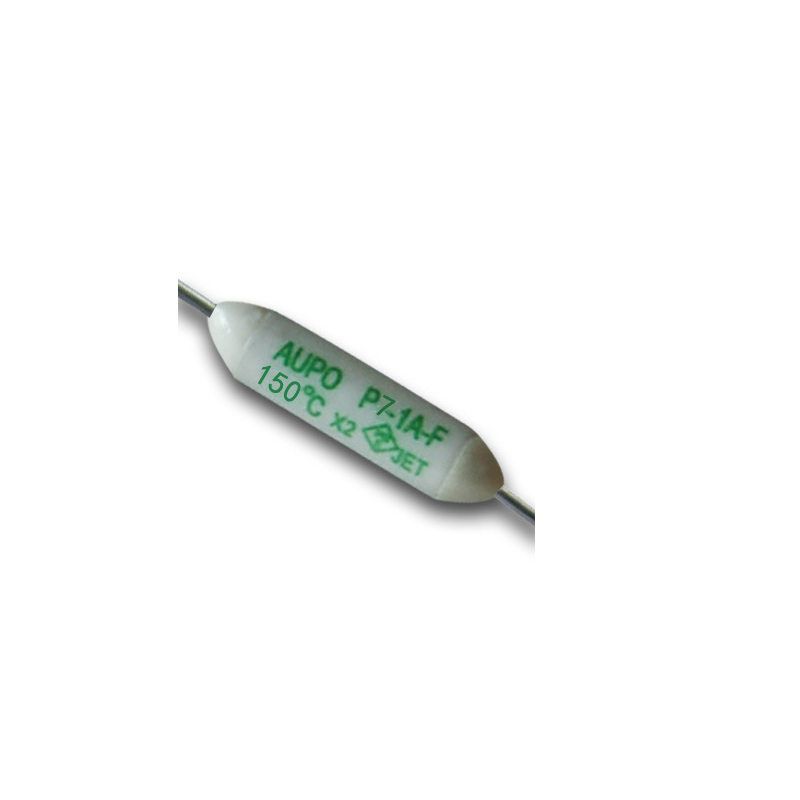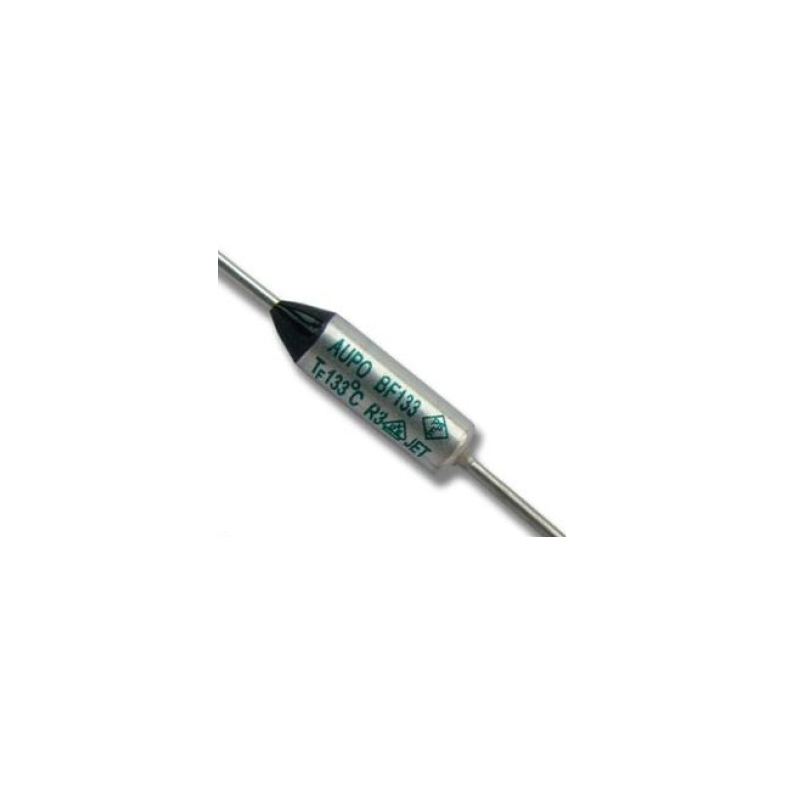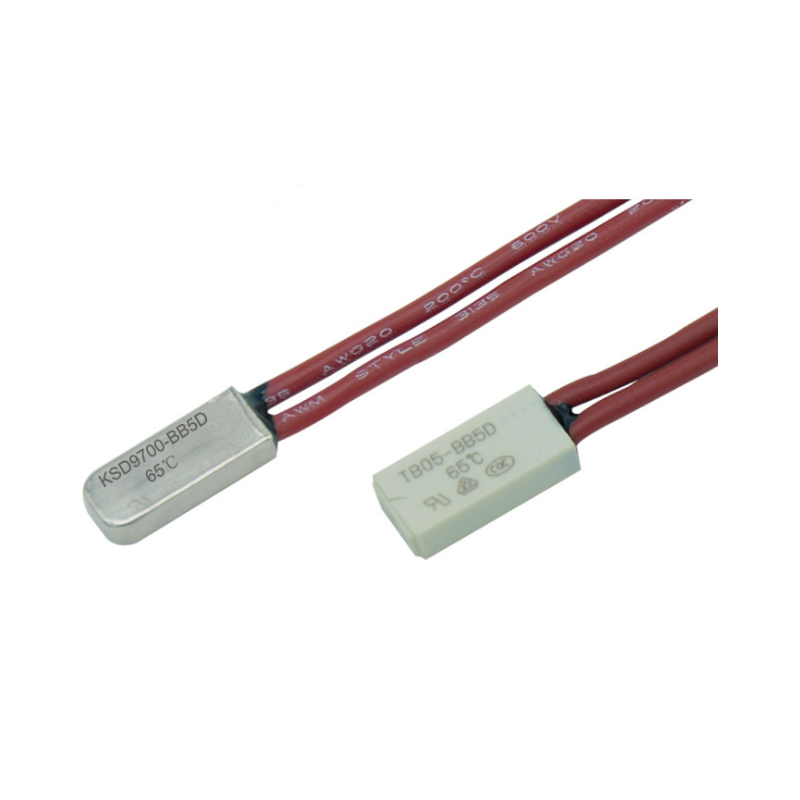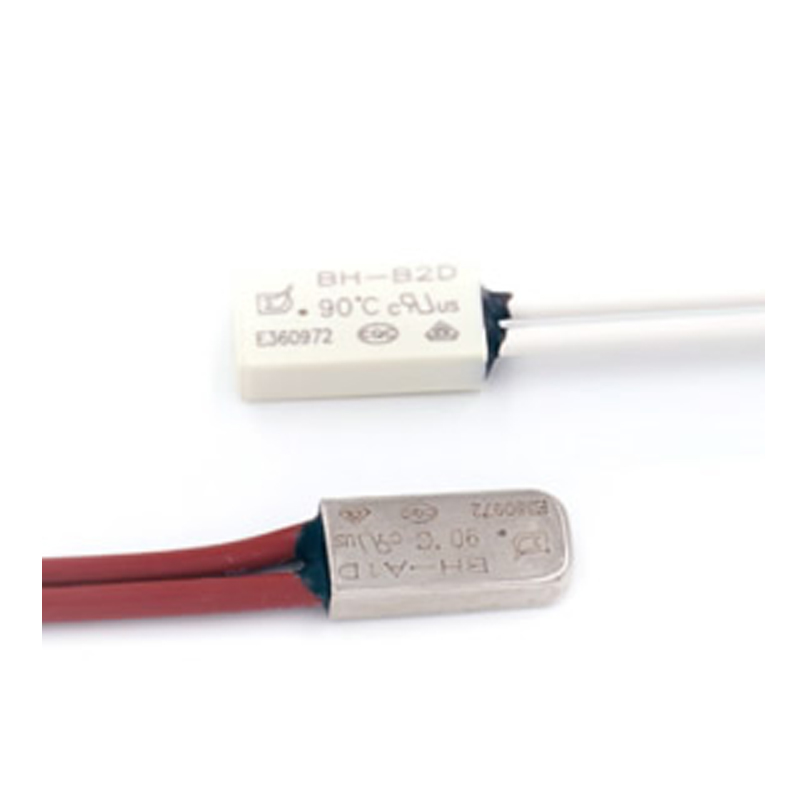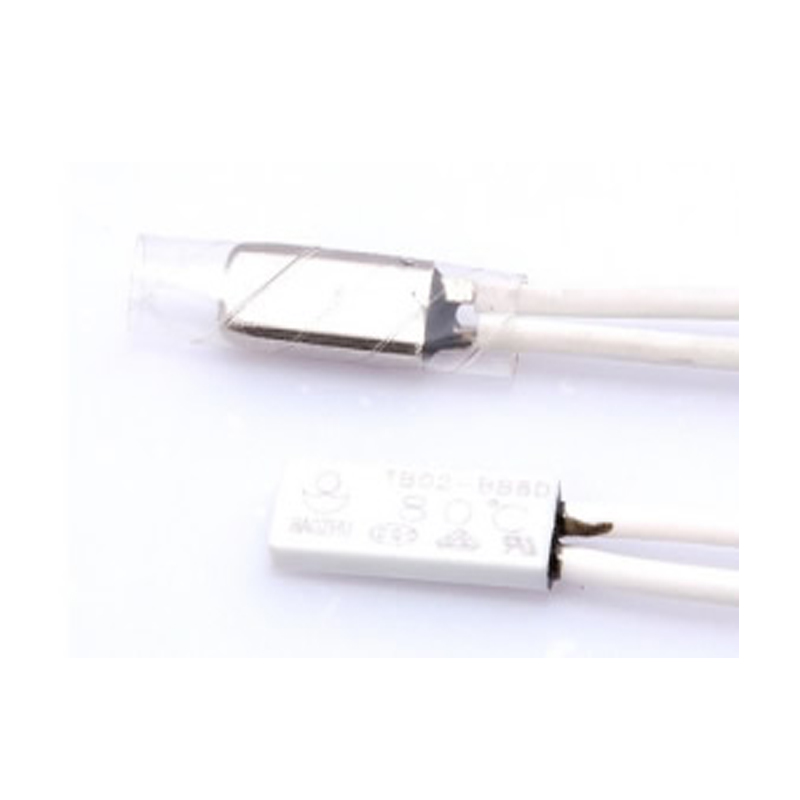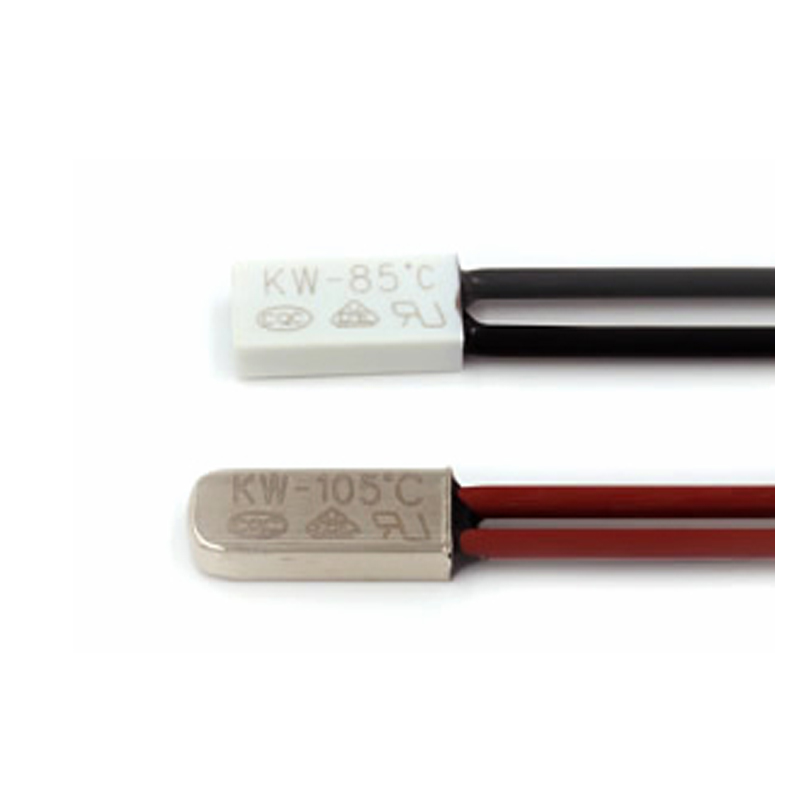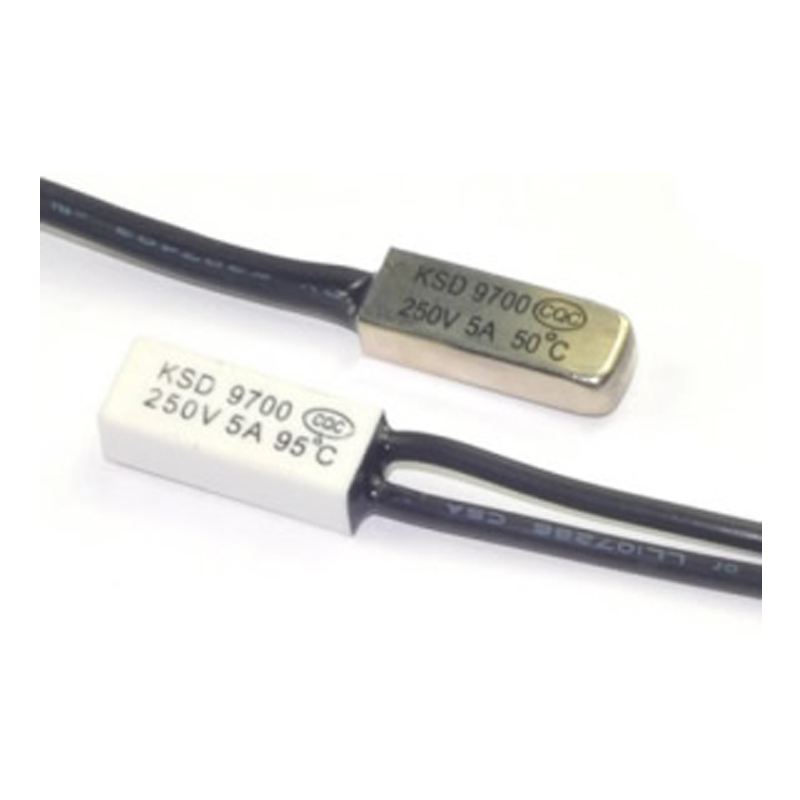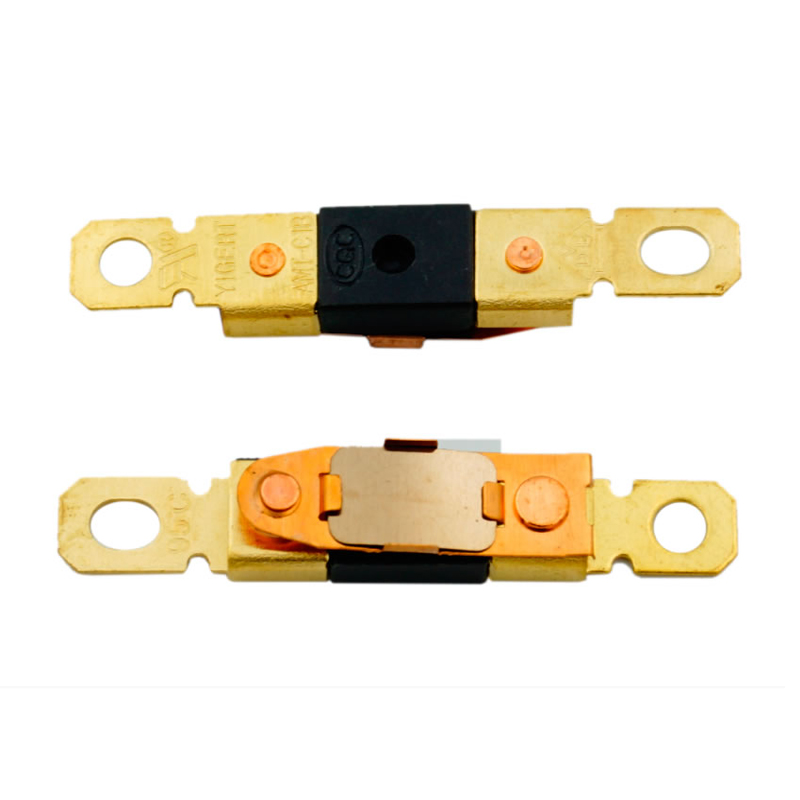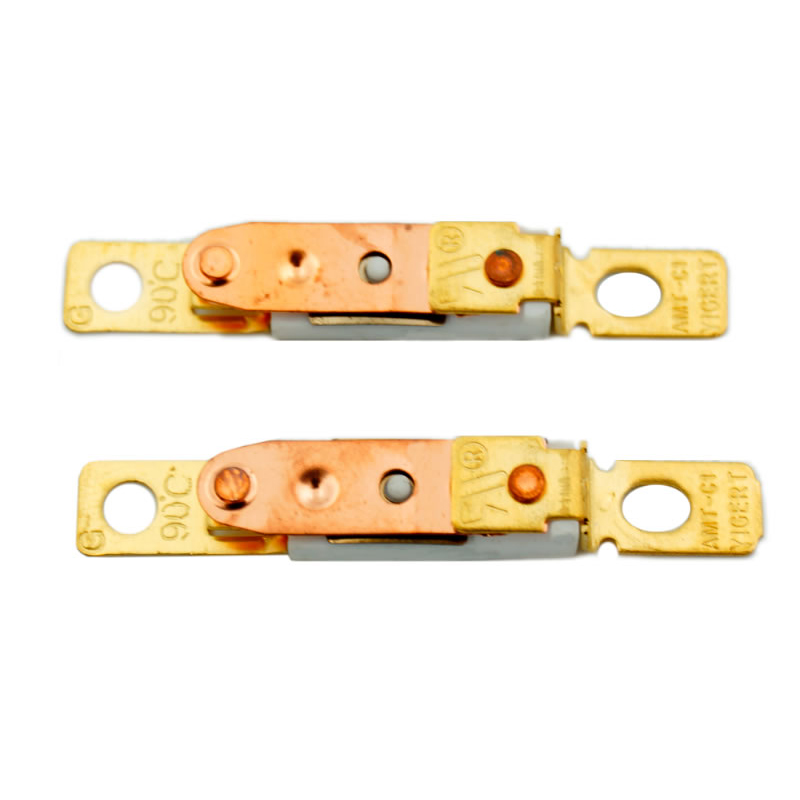What is temperature fuse:
There are many forms of temperature fuse, and the following three are more common:
First: Organic temperature fuse
It is composed of sliding contact, spring and electrically nonconductive thermal pellet. Before the temperature fuse is activated, the current flows from the left lead to the sliding contact and through the metal housing to the right lead. When the external temperature reaches a predetermined temperature, the organic matter can melt and the compression spring will become loose. That is, the spring expands and the sliding contact is separated from the left lead. The circuit is opened and the current between the sliding contact and the left lead is cut off.
The second type: porcelain tube type thermal fuse
It is composed of an axisymmetric lead, a fusible alloy that can be melted at a specified temperature, a special compound to prevent its melting and oxidation, and an insulating porcelain insulator. When the ambient temperature rises, the specific resin mixture begins to liquefy. When the melting point is reached, with the help of the resin mixture (increasing the surface tension of the melted alloy), the melted alloy rapidly shrinks into a ball centered on the leads at both ends under the action of surface tension, so as to permanently cut off the circuit.
The third type: square shell Thermal Cutoffs
A section of fusible gold wire is connected between the two pins of the temperature fuse, and the special resin is coated with the fusible gold wire. The current can flow from one pin to another. When the temperature around the temperature fuse rises to its operating temperature, the fusible alloy melts and shrinks into a ball at the ends of the two pins under the action of surface tension and the help of special resin. In this way, the circuit is permanently cut off.
The following items must be observed to ensure the normal operation of the Thermal Switches:
i) The rated current and voltage, fusing temperature (TF), service temperature (th) and maximum temperature (TM) of each temperature fuse shall be used under the specified parameters.
II) when selecting the installation position of the fuse, pay attention not to transfer the stress to the fuse due to the vibration in the finished product and the displacement of other accessories.
III) it shall be installed where the temperature will not rise above the maximum service temperature after the Miniature Thermal Cutoff Devices is blown.
IV) cannot be used in machines with liquids or humidity maintained above 95%.
v) The temperature fuse shall be installed in a place that can only sense the heat source of the temperature fuse. When the structure is unavoidable, thermal resistance spacers shall be set. For example, when installing on the heater, pay attention not to connect directly, so as to prevent the hot wire from heating to the temperature fuse
VI) if the temperature fuse is connected in parallel or continuously passes through overcurrent and overvoltage in order to increase the current of the temperature fuse, the internal contact of the temperature fuse will be damaged and its normal operation will be affected. Therefore, it cannot be used under the above conditions.
Although the temperature fuse has high reliability in design, the abnormal conditions that a single temperature fuse can cope with are limited after all. In addition, due to man-made or unforeseen force majeure, if the temperature fuse is damaged and cannot function normally, the circuit cannot be cut off in time when the machine is abnormal. Therefore, more than two temperature fuses with different fusing temperatures shall be used when the machine is overheated, when the wrong action has a direct impact on the human body, when there is no circuit cutting equipment except fuses, and when high safety is required.
The thin temperature fuse is specially developed for over temperature protection of lithium-ion battery. Its working principle is the same as that of the second temperature fuse mentioned above. The circuit is connected with low melting point alloy. The low melting point alloy is wrapped with melting aid resin. The low melting point alloy is connected with metal guide plate and sealed by plastic material. When the internal temperature of the battery rises to a certain level due to short circuit inside or outside the battery or other reasons, the temperature fuse close to the battery cell will quickly blow, so as to cut off the external circuit of the battery and prevent the battery from exploding and personal injury. As handheld electronic devices need to be more and more portable, the size of temperature fuse needs to be as small as possible and as thin as possible. At present, the thinnest temperature fuse can be 0.65mm thick and 2.7mm wide. The internal resistance of temperature fuse is also very small, only about 8m Ω. The power consumption in standby mode is very small, which can greatly increase the standby time of lithium-ion battery.
It also has some disadvantages. Firstly, it is unrecoverable. It is not as good as PTC. Even if an accidental fault causes PTC action, once the fault is eliminated, the battery can continue to work. Once the temperature fuse acts, the whole battery can no longer work. Of course, with the quality of lithium-ion batteries getting better and better, the probability of this accidental failure is getting smaller and smaller. Once an abnormality occurs, the battery will not be allowed to continue to use, but it has become the advantage of temperature fuse. After all, the cost of a battery is minimal compared with personal injury events. As the saying goes, we'd rather kill by mistake than let go. As long as the cell phone battery has a high-temperature failure, who dares to put this potential bomb around? Second, it cannot be welded and processed in ordinary ways, such as PPTC, which can withstand high temperature for a short time. Therefore, it can be welded in reflow furnace and directly injected into the battery. However, the temperature fuse can only be locally welded such as spot welding and laser welding to prevent the temperature fuse from fusing.
At present, 98 ℃ and 92 ℃ thin temperature fuses are widely used. Under the heating rate of 1 ℃ / min, the fusing temperature of 98 ℃ thin temperature fuse is 94 ± 3, and that of 92 ℃ thin temperature fuse is 89 + 3 / - 4, i.e. 85 ℃ ~ 92 ℃. Domestic manufacturers have been developing thin temperature fuses with higher fusing temperature. Temperature fuses can be divided into:
By material: it can be divided into metal shell, plastic shell and oxidation film shell
It can be divided into 73 degrees 99 degrees 77 degrees 94 degrees 113 degrees 121 degrees 133 degrees 142 degrees 157 degrees 172 degrees 192 degrees 216 degrees 227 degrees 240 degrees 70 degrees 77 degrees 84 degrees 92 degrees 95 degrees 105 degrees 110 degrees 115 degrees 121 degrees 128 degrees 130 degrees 139 degrees 141 degrees 144 degrees 152 degrees 157 degrees 169 degrees 184 degrees 185 degrees 192 degrees 216 degrees 227 degrees 228 degrees 240 degrees 250 degrees 280 degrees 320 degrees
NINGBO FBELE ELECTRONICS CO.,LTD.
FBELE company was founded in 1997, is China's leading manufacturer of acoustic and other electronic components, we designs,manufactures, distributes high quality products in very competitive price, bestservice, timely delivery, small order acceptable, etc. Our products include piezo ceramic element, piezoelectric buzzer, magnetic buzzer,speakers, transducer, receiver, electret condenser microphone, magnetic contact. Piezoelectric alarm,ultrasonic sensor,PZT ceramics,etc.
- Following 0
- Followers 0
- Send Msg


